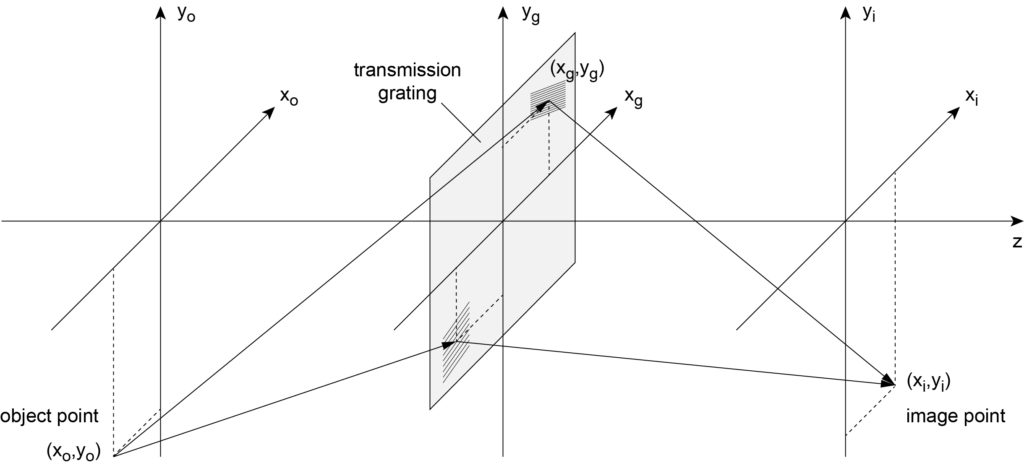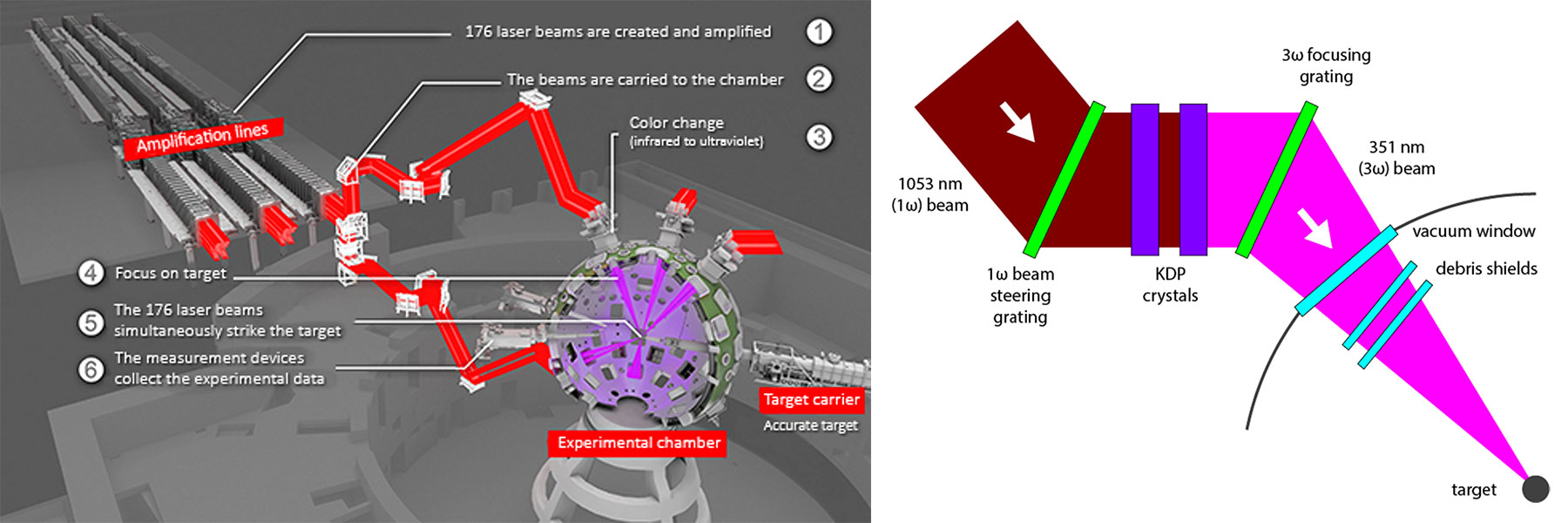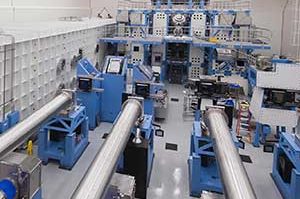Diffraction gratings may be used for basic laser beam management functions, such as steering and focusing. As a simple example, by varying the period and orientation of the fringes across its aperture, a grating can perform point-to-point imaging just like a lens (see Figure 1).

Gratings do have limitations compared to large refractive or reflective optics, such as spectral bandwidth. Because angle and wavelength are intimately coupled by gratings, complex wavefront manipulation requires relatively narrowband beams. Polarization must also be considered, though some designs can be made quite polarization independent, and many laser systems are polarized. Despite these restrictions, in many systems advantages of gratings for managing particularly larger beams surpass the disadvantages.
In addition to the potential for a simpler and lower-cost solution, gratings also offer the ability to generate freeform wavefronts for additional cost and weight reduction through elimination of components. Because these complex wavefronts are produced with a fully deterministic method, use of large-optics metrology for in-process feedback is not as critical, further reducing production costs. And, with gratings it is possible to incorporate additional functionality useful for laser systems within a single compact component, such as beam homogenization for speckle reduction.
The performance of many laser-based optical systems is improved by increasing beam size, often to enable higher intensity. Applications in materials processing range from cutting to annealing, while those in scientific research span laser fusion to particle acceleration. However, costs associated with large-format optical components such as lenses and mirrors as beam size increases can quickly become prohibitive due to fabrication challenges in material production, polishing, and metrology. For this reason gratings offer a viable alternative.
Cylindrical focusing gratings can be used for high-intensity laser line generation for materials processing in place of large-format cylindrical lenses, which are difficult and expensive to manufacture. One example where gratings can have an impact is excimer laser annealing of amorphous silicon (a-Si) to low-temperature poly-Si (LTPS) – a critical process step for LCD and AMOLED displays for devices ranging from smart phones to large flat-panel displays.
Gratings can also enable large scientific research lasers. Large transmission gratings were found to be the most optimal solution for steering and focusing the ultra-high-intensity 1053 and 351 nm beams at the end of the Laser Megajoule (LMJ) system at the Commissariat á l’Energie Atomique (CEA) in France (see Figure 2). These gratings are now in full-scale volume production, with many dozens successfully manufactured to date.

Actually manufacturing a grating with a complex grating fringe program is not so straightforward. Prior to coherent lasers and sensitive photoresist processes, gratings were generally patterned by mechanical ruling engines, which write individual lines sequentially. Sophisticated, stable, Displacement Measuring Interferometer (DMI) based engines could pattern very large and even complex grating profiles flexibly. However, the process is slow and subject to mechanical imperfections associated with wear and environmental variations over the long write times. Hence only “masters” can be written this way, so production gratings are “replicas” which exhibit further imperfections resulting from the replication process. Holographic gratings written by two-beam interference introduced a cost-effective path to more rapidly produce high-quality gratings free from ruling-engine and replication errors. However, this approach restricts the flexibility with which gratings of arbitrary periods and especially spatially varying periods can be made. Furthermore, it introduces other types of diffracted wavefront errors resulting from writing beam aberrations, and is difficult and expensive to scale to larger sizes.
PGL’s Nanoruler patterning engine uses Scanning Beam Interference Lithography (SBIL), which combines the best of both worlds – the patterning flexibility and large-size capability of mechanical ruling engines with the speed and reduction of grating fringe errors afforded by holographic writing. Besides the excellent patterning performance (period repeatability better than 10 ppb, diffraction efficiency standard deviations < 1% over very large areas, and superb diffracted wavefront error), there is no fundamental limit to the substrate size. And, SBIL is naturally flexible, enabling a simple programmable approach to spatially varying the grating period and orientation during the writing process.

![]()
5 Commerce Way, Carver, MA 02330, USA|+1.508.503.1719|sales@plymouthgrating.com